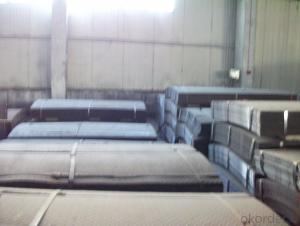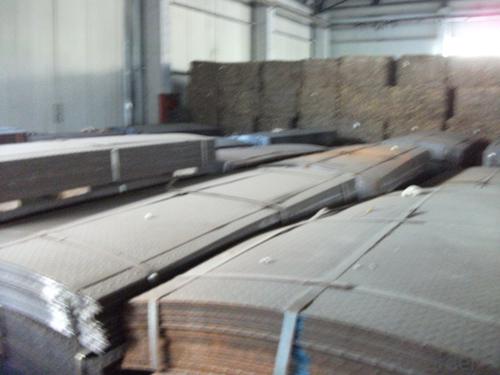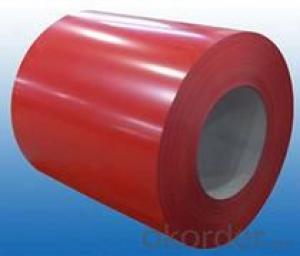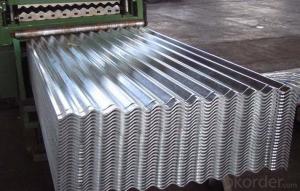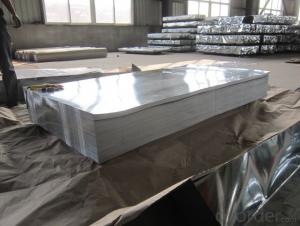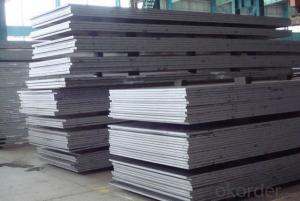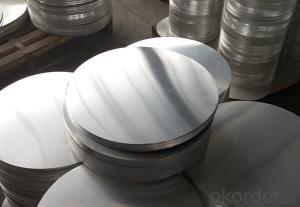hot rolled checkered plate
- Loading Port:
- China Main Port
- Payment Terms:
- TT OR LC
- Min Order Qty:
- -
- Supply Capability:
- -
OKorder Service Pledge
OKorder Financial Service
You Might Also Like
Product Description:
1, carbon steel rimmed steel sheet (GB3274-88)
Steel rimmed steel sheet as the name suggests is made by boiling hot rolled steel plate made of ordinary carbon structural steel. Rimming steel deoxygenation is a complete steel, steel liquid oxygen content is higher, when molten steel after the injection mould, carbon oxygen reaction to produce large amounts of gas, resulting in liquid steel was named after boiling state. Rimming steel with low carbon content, and because no FeSi deoxidization, so steel containing silicon amount <0.07%. Boiling steel outer layer is crystallized in the boiling state, so the surface clean, compact, good surface quality, good processing performance. Rimming steel no large shrinkage hole, deoxidizer used less, low cost of steel. Rimming steel heart of impurities, with the serious segregation, mechanical heterogeneity, more gas in steel, low toughness, cold brittleness and aging sensitivity is larger, the welding performance is poor, so it does not apply to manufacturing under impact load, welding pieces of the structure and other important components work under low temperature.
Steel plate used in the manufacture of all kinds of stamping parts, construction and engineering structure and the structure of the machine is not too important and parts of boiling. The grade, chemical composition and mechanical properties of the material with GB700-79 (88) (technical specification for steel structure of ordinary carbon steel provisions boiling). Hot rolled thick steel plate with thickness of 4.5-200mm. Production units are mainly of Anshan Iron and steel company, Wuhan, Maanshan Iron and steel, TISCO, Chongqing steel, Handan iron and Steel General Factory, Xinyu steel, Liuzhou steel, Anyang steel company, Yingkou plate plant of Tianjin steel and etc..
2 killed steel, plain carbon steel (GB3274-88)
Ordinary carbon steel plate is made of ordinary carbon structural steel hot-rolled steel billet sedation. Deoxidation fully killed steel is steel, steel liquid deoxidation ferromanganese, ferrosilicon and full aluminum ingot casting liquid steel in front, more calm in the mould, does not produce the boiling state, so named for the killed steel. Advantages of killed steel is uniform chemical composition, so the mechanical properties of each part is uniform, the welding performance and good ductility, corrosion resistance is strong. But the surface of poor quality, concentrated shrinkage, higher cost.
Ordinary killed steel is mainly used for structural components, production impact at low temperature welding structure, and other requirements of high strength. The grade, chemical composition and mechanical properties of the material with GB700-79 (88) (technical conditions of steel carbon structure) provisions in killed steel. Size thickness of 4.5-200mm plate. Anshan Iron and steel company, Wuhan Iron and steel are the main production units, Wuyang Steel Corp, Maanshan Iron and steel, TISCO, Chongqing steel, Handan iron and Steel General Factory, Xinyu steel, Liuzhou steel, Anyang, Tianjin, Yingkou Steel Corp steel medium plate plant, a steel, three factory, Shaoguan iron and steel plant and Ji'nan iron and steel factory.
3, low alloy structural steel (GB3274-88)
Low alloy structural steel plate is made of hot rolled low alloy structural steel. Low alloy steel plate is killed steel and semi killed steel sheet. The utility model has the advantages of high strength, good performance, can save large amounts of steel, reduce the structure weight etc.. Low alloy structural steel is more and more widely used in machinery manufacturing and metal structural parts. Thickness of hot rolled steel plate 4.5-200mm. The production unit including Anshan, Wuhan, Wuyang Steel Corp, Maanshan Iron and steel, Chongqing steel, Xinyu steel, Liuzhou steel, Kunming Steel Corp, Tianjin steel, Shaoguan steel plant, Anyang Steel Corp, a steel, three factory and taiyuan.
Steel plate hot rolling with 4, general structure (GB2517-81)
Mainly used for general structure of buildings, bridges, vehicles, etc.. Steel plate (belt) thickness from 1.2-13.0mm; width from 700-1550mm; the length from 2000-12000mm.
5, welded weathering steel with structure (GB4172-84)
Weathering steel is atmospheric corrosion resistant steel. Welding structure with weathering steel is adding small amount of alloying elements in steel, such as steel, chromium, nickel, molybdenum, niobium, titanium, zirconium and vanadium, which form a protective layer on the surface of a metal matrix, in order to improve the weathering steel, and good welding performance. Mainly used in bridges, buildings and other structures.
6, high weatherability, structural steel plates (GB4171-84)
Atmospheric corrosion resistance of weathering steel is economic. Adding small amount of alloying elements in steel, such as steel, phosphorus, chromium, nickel, molybdenum and niobium, titanium, zirconium and vanadium, the level of protection to improve the weathering resistance steel is formed on the surface of the metal substrate. Mainly applicable to buildings, vehicles, towers and other structures.
7, checkered steel plate (GB3277-82)
Pattern plate is the surface with diamond or lentil shaped rib plate. The specifications to the thickness (rib thickness excluding) said. The pattern plate is provided with antiskid effect, often used as a floor, workshop, working frame escalator pedal, the deck of a ship and car plate etc.. The pattern plate material with ordinary carbon structural steel B1, B2 and B3 grade steel rolling form, its chemical composition meet the GB700-79 (technical conditions of steel carbon structure) regulations. Production units are mainly the Anshan Iron and steel and Anyang Steel Corp.
Steel plate for 8, bridge (YB168-70)
The bridge plate is dedicated to the rack railway or highway bridge plate making. Load and impact requirements and has high strength, toughness and bear the locomotive and vehicle, and have good fatigue resistance, low temperature toughness of certain and atmospheric corrosion resistance. Tethered to the welding of bridge steel also has good welding performance and low notch sensitivity. The main structural element for a railway bridge and highway bridge span between 46-160mm. The specifications: thickness from 6-50mm, width, length from 1.0-2.4mm from 2.0-16mm. The production of bridges in China are mainly used steel Anshan, Wuhan steel, steel unit three factory and Chongqing steel etc..
- Q: What are the common thicknesses for stainless steel sheets?
- Common thicknesses for stainless steel sheets range from 0.4mm to 6mm, with the most commonly used thicknesses being 0.8mm, 1mm, 1.2mm, 1.5mm, and 2mm.
- Q: What is the typical hardness range for steel sheets?
- The typical hardness range for steel sheets varies depending on the specific grade and type of steel being used. However, in general, steel sheets typically have a hardness range between 150 and 250 on the Vickers hardness scale (HV). This range provides a good balance between strength and formability, making steel sheets suitable for a wide range of applications. It is important to note that hardness can be further adjusted through various heat treatment processes to achieve specific desired properties.
- Q: Why is the water stop steel plate placed in the middle of the wall?
- Of course not. It's in the middle of the perfectly accurate, roughly the middle of the wall. General concrete wall, if there is double layer steel bar, placed in the middle of the two layer of steel bar, when placed with short steel welded fixed on the steel skeleton, pay attention to water stop steel plate, not with the structure steel affixed together.
- Q: Do the steel sheets have any sharp edges?
- Indeed, sharp edges can be found on steel sheets. Throughout their production, steel sheets frequently undergo cutting or shearing processes, thereby resulting in the presence of sharp edges. It is of utmost importance to exercise caution when dealing with steel sheets and to employ suitable protective gear, like gloves, while working with them, in order to prevent any harm arising from the sharp edges.
- Q: How do steel sheets perform in terms of electromagnetic shielding?
- Steel sheets are highly effective in terms of electromagnetic shielding due to their excellent conductivity and low permeability. They can effectively block and redirect electromagnetic waves, preventing their penetration and minimizing interference.
- Q: What are the advantages of using galvanized steel sheets?
- There are several advantages of using galvanized steel sheets in various applications. Firstly, galvanized steel sheets are highly resistant to corrosion. The process of galvanizing involves coating the steel sheets with a layer of zinc, which acts as a protective barrier against rust and other forms of corrosion. This makes galvanized steel sheets ideal for outdoor applications or environments that are prone to moisture, such as construction sites or coastal areas. Secondly, galvanized steel sheets have excellent durability and longevity. The zinc coating on the steel sheets enhances their overall strength and resistance to wear and tear. As a result, galvanized steel sheets can withstand heavy loads, extreme temperatures, and other harsh conditions, making them suitable for long-term use. Additionally, galvanized steel sheets are cost-effective. Although the initial cost of galvanized steel sheets may be slightly higher compared to other materials, their long lifespan and low maintenance requirements offset this initial investment. Galvanized steel sheets do not require frequent painting or sealing, saving both time and money in the long run. Furthermore, galvanized steel sheets are environmentally friendly. The zinc coating used in the galvanizing process is recyclable, contributing to sustainable practices. Additionally, the extended lifespan of galvanized steel sheets reduces the need for frequent replacements, reducing waste and conserving resources. Lastly, galvanized steel sheets offer versatility in terms of applications. They can be easily formed, shaped, and cut to meet specific requirements, making them suitable for a wide range of industries, including construction, automotive, and manufacturing. The ability to customize galvanized steel sheets ensures their compatibility with various designs and structural needs. In summary, the advantages of using galvanized steel sheets include superior corrosion resistance, durability, cost-effectiveness, environmental friendliness, and versatility. These benefits make galvanized steel sheets a popular choice in many industries for a wide range of applications.
- Q: Is galvanized iron sheet the same as galvanized steel sheet? solve
- The same thing is done to slow down the rate of oxidation. Because the zinc is more active than the iron, the zinc first responds, the zinc reaction is finished, iron should. Thereby slowing down its oxidation.
- Q: Are the steel sheets easy to transport and handle?
- Yes, steel sheets are relatively easy to transport and handle. They are typically lightweight and can be easily stacked and loaded onto trucks or containers for transportation. Additionally, steel sheets often come in standardized sizes and shapes, making them easier to handle and maneuver. However, it is important to note that the size and thickness of the steel sheets can impact the ease of transportation and handling. Larger and thicker sheets may require specialized equipment or additional manpower to lift and move.
- Q: Can steel sheets be used for manufacturing machinery parts?
- Yes, steel sheets can be used for manufacturing machinery parts. Steel is a versatile and durable material that offers excellent strength and rigidity, making it suitable for producing various machinery components. Steel sheets can be easily formed, cut, and welded to create complex shapes and structures required for machinery parts. Additionally, steel has good corrosion resistance, ensuring the longevity of the machinery components. Steel sheets also provide dimensional stability and can withstand heavy loads and high temperatures, making them an ideal choice for manufacturing machinery parts.
- Q: What is the typical yield strength of stainless steel sheets?
- The typical yield strength of stainless steel sheets can vary depending on the grade and thickness of the material. However, on average, stainless steel sheets have a yield strength ranging from 30,000 to 80,000 pounds per square inch (psi). It is important to note that different grades of stainless steel, such as 304, 316, or 430, will have different yield strengths. Additionally, the thickness of the sheet can also affect the yield strength, with thinner sheets generally having lower yield strengths compared to thicker sheets. Therefore, it is recommended to consult the specific grade and thickness specifications provided by the manufacturer or supplier to determine the exact yield strength of a particular stainless steel sheet.
Send your message to us
hot rolled checkered plate
- Loading Port:
- China Main Port
- Payment Terms:
- TT OR LC
- Min Order Qty:
- -
- Supply Capability:
- -
OKorder Service Pledge
OKorder Financial Service
Similar products
Hot products
Hot Searches
Related keywords

